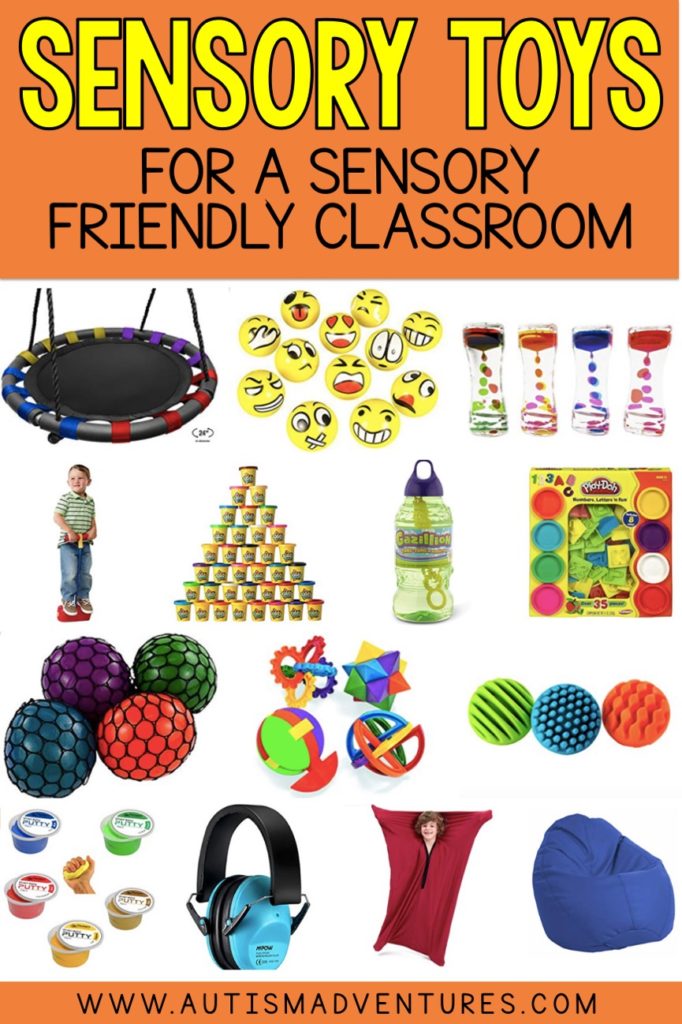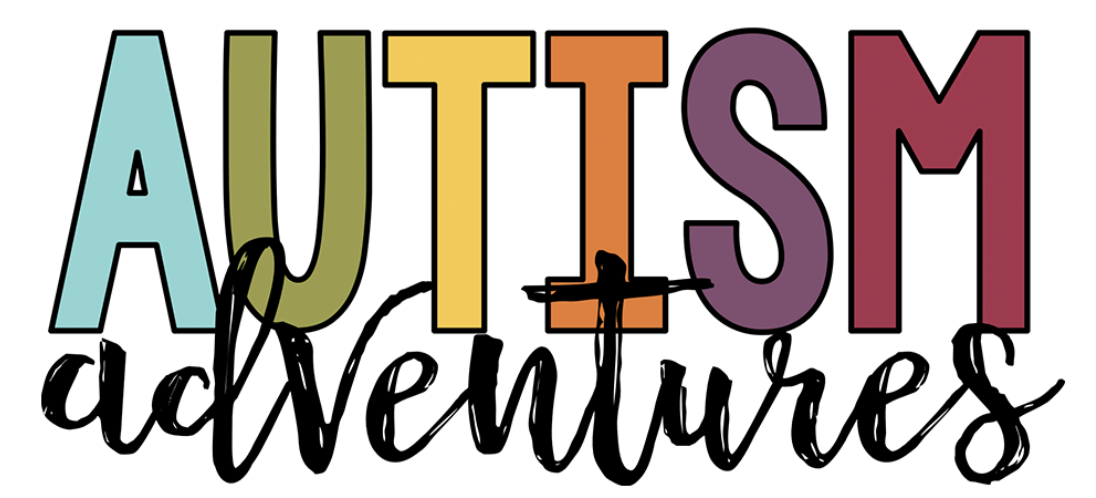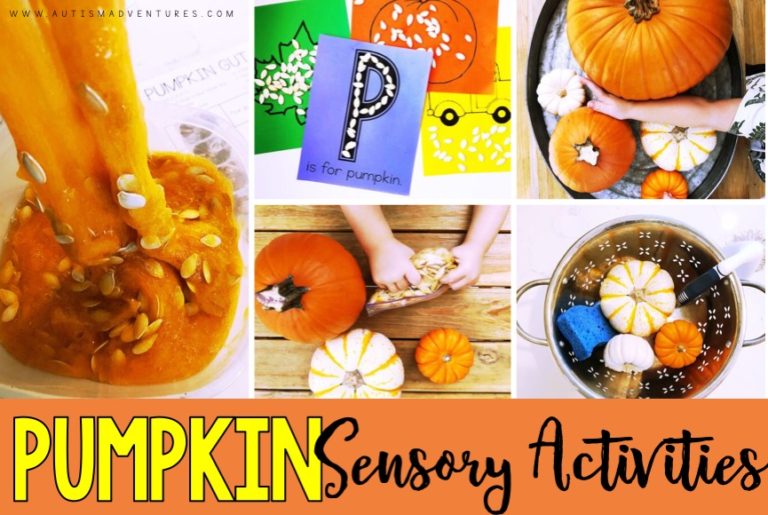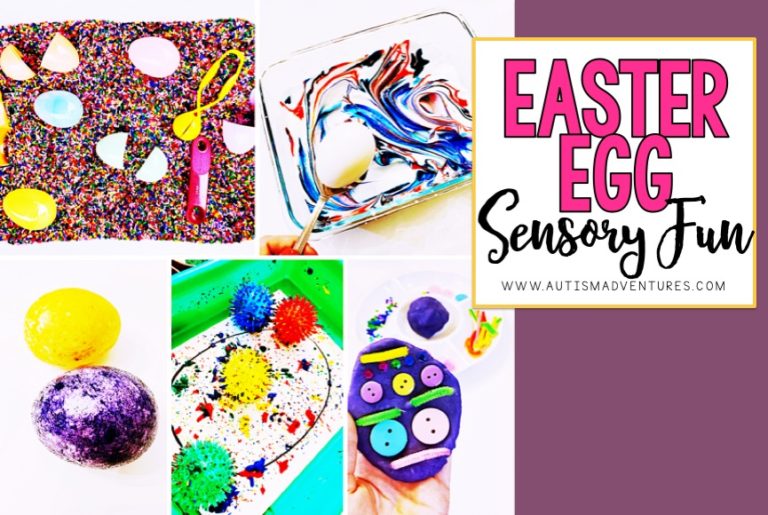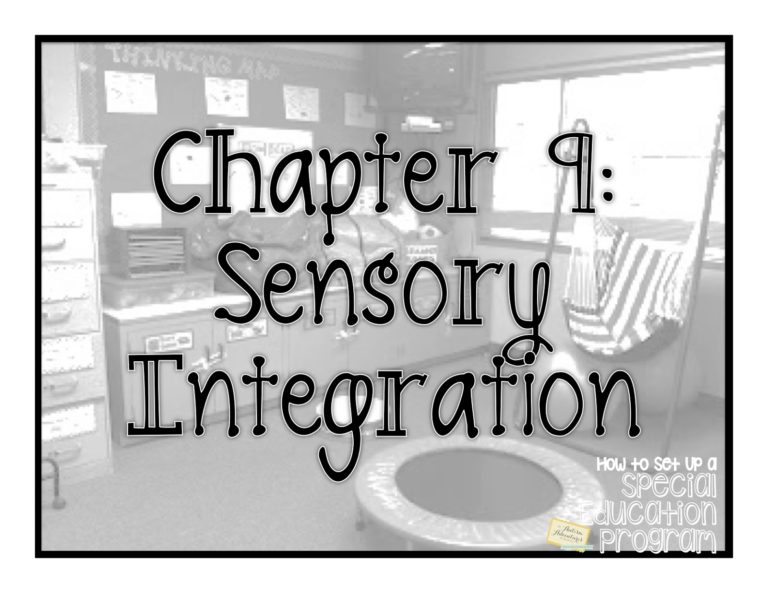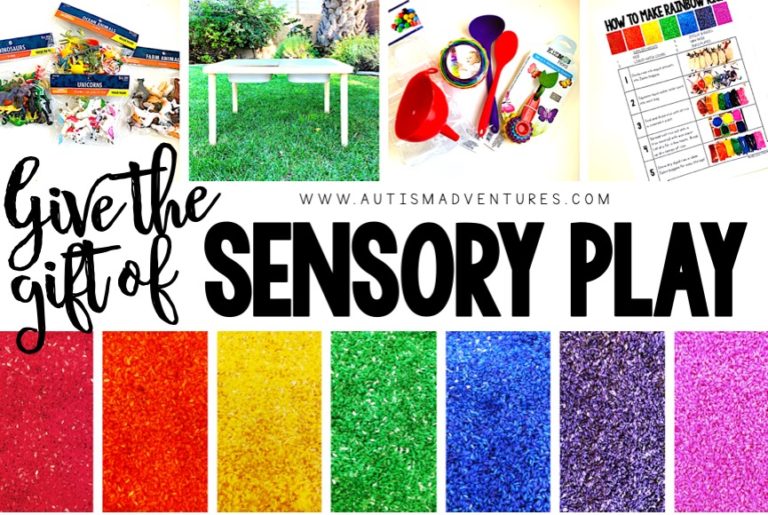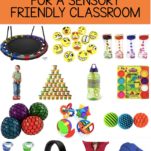My Favorite Sensory Tools
My Favorite Sensory Tools For A Sensory Friendly Classroom
If you’ve been following the Sensory Needs In The Classroom series you’ve gained valuable tips and information on how to help your students with sensory integration in the classroom. Today I am going to be talking all about sensory tools for a sensory friendly classroom.

To put all of these great ideas to work you need some tools too! In this post I’ll share some of my favorite products that I use on a daily basis. Besides being sensory friendly they are also teacher friendly. That is, these items fit well in the classroom and can be educational. These tried and true toys are a favorite of my students too.
To help equip your classroom here are my favorite sensory tool recommendations!
Visual Sensory Tools
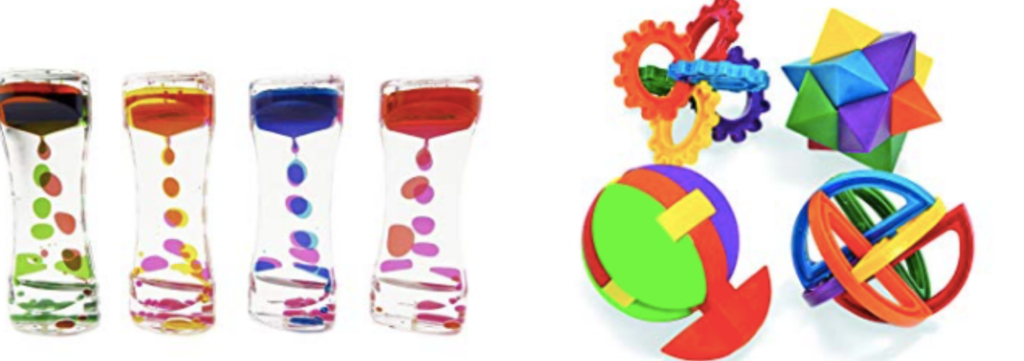
Super Z Outlet Liquid Motion Bubbler
For kids that seek out visual stimuli, this is a great toy to have on hand. The slow moving bubbles have a great calming and mesmerizing effect. It also helps with focus. I like to use these for simple sensory breaks, but to also help my students get refocused. When my students eyes start darting to other parts of the room rather than their school work I let them watch one of these to help bring their eyes back to their paper.
Fun Express Puzzle Balls
Again this is a great toy for visual seeking kids. I have several students that perseverate on visual things like watching a rainstick over and over. It can be difficult to get their attention off of these types of toys. I like to use the puzzle toys to give them the visual input they are seeking and give some purpose to their focus. These puzzles are also great for eye-hand coordination and problem solving.
Auditory Sensory Tools
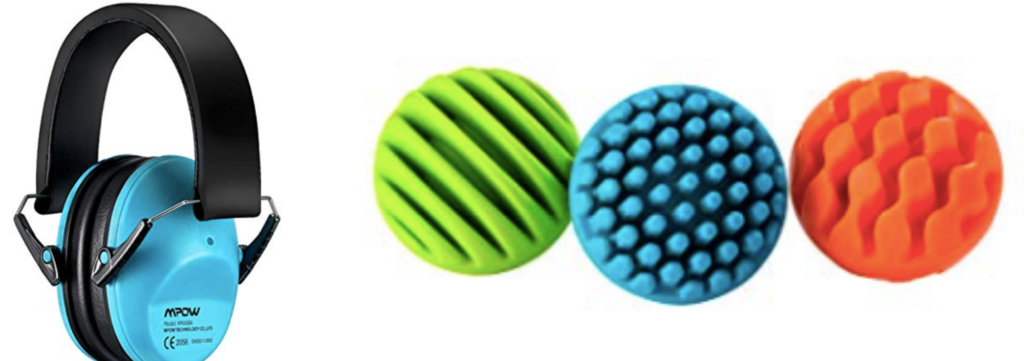
Noise Reduction Ear Muffs
Noise reduction ear muffs are a wonderful tool to have on hand for students with hearing sensitivities. They are great to use in a noisy lunchroom or during fire drills. My students also use them for sensory breaks when they need to shut out the sounds for a little bit.
I also like to work with my students to help them determine what sounds make them uncomfortable. Together we make a list of nice sounds and not nice sounds to help them remember when to put on the headphones before noises impact them.
I like these particular noise reduction ear muffs because they are made for kids, are adjustable and comfortable. They fold up nicely in backpacks and kids like the color.
Fat Brain Toys Sensory Rollers
These toys are perfect for kids that love sound. These sensory rollers make a very pleasant sounding chime, which is fun for kids to listen to as they use it as a fidget.
I also like to sing simple songs with these balls. These are fun to shake to songs like “Baby Shark,” “Mommy Finger” or “Two Little Blackbirds.” Incorporating sounds and objects help kids focus on the music and helps with eye-hand coordination.
Tactile Sensory Tools
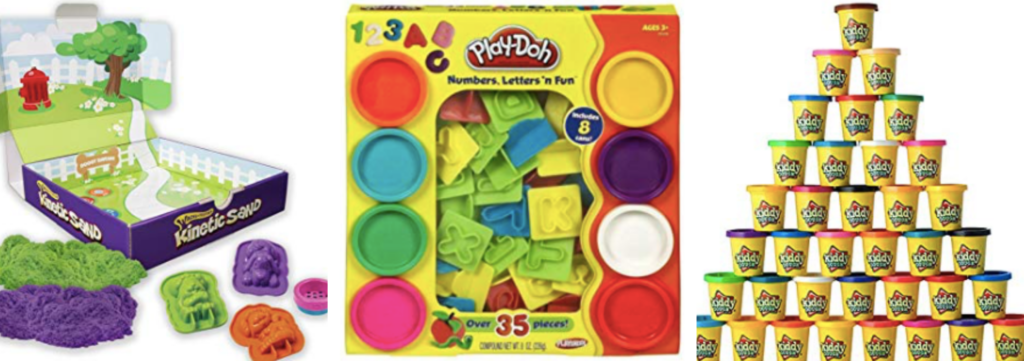
Kiddy Dough Compound
Play dough is a timeless classic for kids. It’s very therapeutic too! Kids build hand and finger strength, work on object manipulation and learn how to use both hands as they play. It’s also a great tool to use on kids with tactile sensitivities.
There are so many creative things you can do with the dough, like teaching colors and color sorting. I like to make different faces out of the dough to help teach emotions and perspective.
This Play-Doh Numbers Letters N Fun is a great way to teach numbers and letters. You can make a letter out of the alphabet and match the letter to a picture that starts with the same letter. For the numbers you can make a number out of playdough and then make little playdough balls to match the number.
Play-dough is a great way to build pretend play skills when you make things like food or cars.
Kinetic Sand Doggy Daycare Playset
Sensory bins are very popular in my classroom. While I have things like corn and rice it seems like kinetic sand is a standard favorite. I find kids have strong opinions for likes or dislikes with other textures but kinetic sand is tolerated by most everyone.
There are many great uses for kinetic sand too. Running hands through the sand or watching it slowly fall out of a spoon has a calming effect. Kids who don’t like to get messy in a regular sandbox like this stuff. Kids who constantly seek tactile play get the sensory input they need with kinetic sand.
I like this particular playset because if offers great tactile play but also provides bi-lateral movement and fine motor skill development. Kids need to use both hands to shape the sand into the molds which help them with fine motor development. The puppies are fun and also offers opportunities for pretend play.
Taste/Oral Sensory Tools
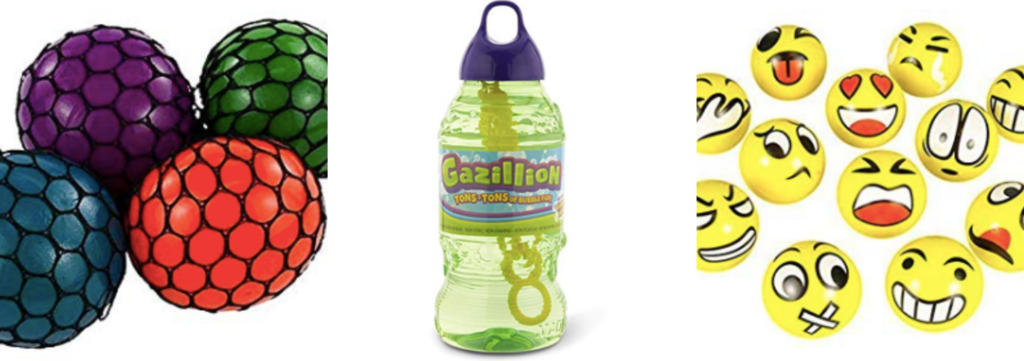
Stress Ball and Squeeze Toys
Stress balls are obviously great to squeeze with hands, but did you know they make great chew toys? I like this set because there are 29 of them in one bag, which means I can use several of them for each student. Each child has 2-3 assigned to them for the day. They are also made of non toxic thermoplastic rubber so they are safe and durable.
Using these squeeze toys for oral sensory input offer a fun thing for kids to chew on as they seek out oral stimulation or need something to bite for calming. Since they are larger cleaning is easier.
If peanut allergies are not an issue I like to put peanut butter on them for kids to lick off to help build their cheek muscles, which in turn helps with speech development.
Gazillion Bubbles 2 Liter Solution
Blowing bubbles is obviously a great calming tool, and are an effective tool for building oral motor skills. Blowing helps with lip formation and movement and breath control.
I use bubbles a lot, and like to get them in larger containers, which is why this 2 liter bottle is great. I find this solution also makes the best bubbles, they don’t pop so easily. I use bubbles for calming breaks and transitions. Kids like to blow bubbles in between lessons and they look forward to the break.
For bubble blowing games we like to see who can blow the biggest bubble, blow the most bubbles or time how long the bubble lasts before popping. We also play a bubble monster game by pouring some soap into a shallow dish and blow bubbles with a sock over a tube.
Smell Sensory Tools
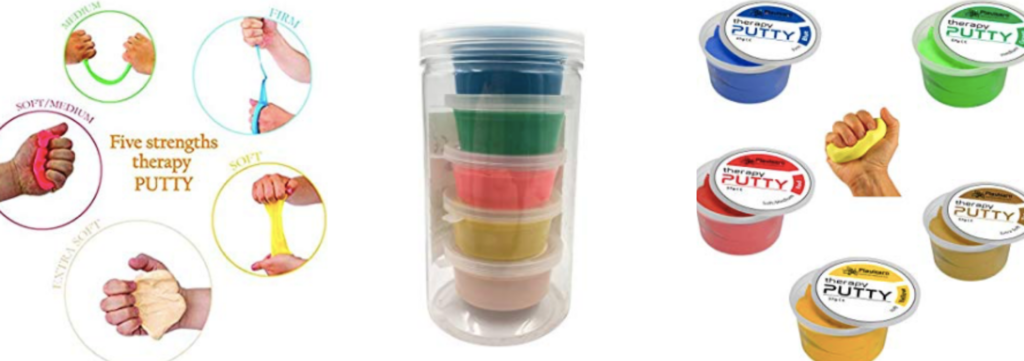
Playlearn Odorless Therapy Putty
Therapy putty and other similar products get used a lot in my classroom. The one drawback to some of them is the smell. Not all are perfumed, but they still have some sort of odor, which is off putting for kids with sensitivity to smells. I’ve had many experiences bringing out putty to help a child calm down only to make the situation worse because the kids didn’t like the smell.
Luckily this putty really truly is scent free. In fact I just use this putty with all of my kids, whether they have issues with smell or not. The texture of this stuff is great for poking, squeezing and stretching, which helps with stress relief and strengthening fingers. It’s comforting for me not having to worry about smells when using this putty.
This putty also comes in different resistant levels, so you can use the right level for each kid, and kids can go through all 5 levels as they build strength.
Vestibular and Proprioceptive Sensory Tools
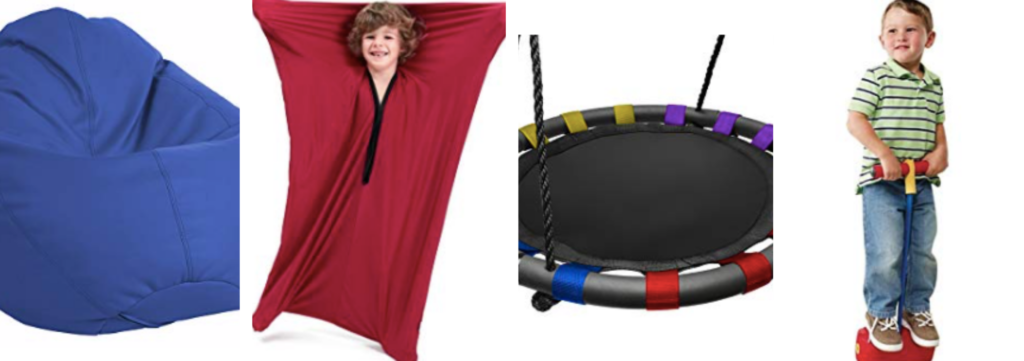
Sorbus Spinner Swing
Swinging breaks are another regular component to my student’s day. Kids that have sensitive vestibular systems really like to swing because it helps calm their sensations that are stimulated in the inner ear. This swing is great for the classroom because it can easily be set up or taken down to use in another spot in the classroom. Plus it doesn’t take up much space compared to many other swings.
Some things I like to do with the swing include number or letter matching. I’ll have a bucket labeled with a number and my student has to count out the correct number of objects to put in the bucket as they swing back and forth. You can do this with colors and shapes too.
ANHO Dynamic Movement Sensory Body Sock
This body sock is multifunctional, which is why I love it! It is great to for creating small calming spaces for kids who need a break. My students can hide from the world and get deep pressure from the stretchy fabric.
It also helps with motor planning and building strength for fine motor skills. I use this for hide and seek where kids have to hide in the sock and then try to bust their way out. This requires them to use their whole body and motor planning to get out because the sock fully surrounds them. I also play tug of war with it, tugging on the stretchy fabric helps build upper arm strength which in turn helps with fine motor planning.
Kidoozie Foam Pogo Jumper
Jumping is a great activity for sensory breaks, but sometimes space is an issue to allow for mini trampolines. My classroom is full to the brim, that’s why I love this pogo jumper. It’s a great space saver!
Plus this pogo jumper allows kids to move around the room as they jump instead of being stationary, which helps them build balance and coordination. Incorporating an outlet to jump helps kids get a sense of how their bodies move through space, strengthens muscles, and calms too. You can use this pogo for simple jumping or mix things up. I like to play Red Light Green Light or What Time Is It Mister Fox to keep jumping activities fun!
Dew Drop Bean Bag Chair
This bean bag chair is perfect for kids who love getting deep pressure. The cushy filling and deep seat surrounds kiddos like a hug and helps calm their body. My students can easily focus to read books, listen to lessons or work on other assignments all from the comfort of this chair. It gets a lot of use throughout the day, but the construction is very durable.
You are well on your way to having an awesome sensory friendly classroom and knowing how to help your students sensory needs. If you missed the other posts in the series be sure to check them out here:
- Sensory Needs In The Classroom: 5 Senses Checklist
- Sensory Play In The Classroom
- How To Use A Sensory Diet In The Classroom
- Proprioceptive and Vestibular Movement Activities In The Classroom
Like what you read? Don’t forget it, PIN IT!
